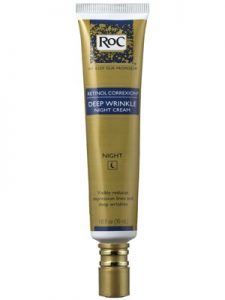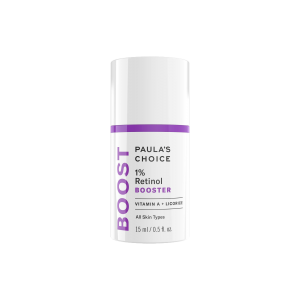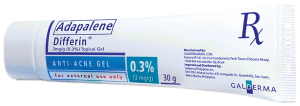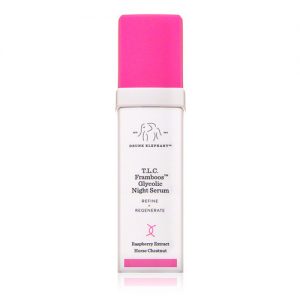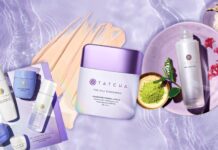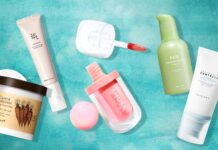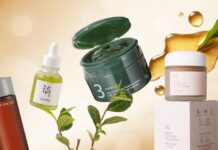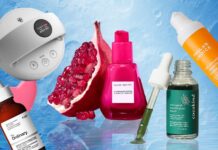
With all the skincare products and ingredients out there that claim to help acne and signs of aging, there’s one that’s been proven and approved by dermatologists. This is vitamin A, or otherwise known as retinol, retinoids, and retin-A. For those of you who don’t know, Vitamin A benefits the skin by targeting specific skin conditions. We’ll talk all about what vitamin A is, how it works in your skin, when and how to use retinol products, and provide product recommendations.
What is Vitamin A?
Vitamin A (otherwise known as retinoid) is an active anti-aging ingredient present in many skincare products today. It’s a natural compound that is present in your body. This vitamin works to help your immune system, repairs tissue damage, and improves your eye health. The word “Retinoid” is actually an umbrella term that can stand for both retin-A and retinol. The latter is a derivative (and much weaker form) of Vitamin A. If you’ve heard of retinoic acid or tretinoin in your products (looking at you, curology!), you can breathe that sigh of relief, because they also belong under this category.
How does it work for our skin?
In a nutshell, vitamin A benefits the skin through Retinoic acid, which works by stimulating the dermis layer (the bottom and deeper layers of the skin). This helps to encourage collagen production, regenerate new cells, and push out the old cells to the surface to reveal…new and clean skin!
Now, why does this matter?
Our skin normally regenerates every 30 days to shed out the dead skin cells. But retinoids work to speed up that process to 14-21 days. When our skin sheds, we allow our newly regenerated cells to essentially start with a blank and clean canvas. This means that Vitamin A benefits the skin in a variety of ways. This includes improvement in pigmentation and sun spots, reduced fine lines and wrinkles and even acne!
Another tidbit is that as we get older.
When can I use retinol products?
Since retinol is known to help with anti-aging and acne-fighting, it’s an ingredient best suited for those with mature skin, adult acne, fine lines and wrinkles. If you’re reaching your late 20’s to early 30’s and onwards, using a retinol product can help your skin appear youthful and glowing. But if you’re in your early to mid 20’s, you can consider using an over-the-counter retinol for prevention and even for your acne.
How do I use retinol products?
Keep in mind that every product out there in the market have different percentages of retinol which can either help your skin or harm it. The highest can go over 2% while the lowest is generally in the range of 0.01 or 0.025%.
Another tidbit of info to keep in mind: according to the FDA, it’s not required for brands to disclose retinol percentages in their products, so definitely make sure you check the label to make sure you know how much vitamin A you’re getting!
Suggestions to Using Retinol
Method 1
If you’re brand new to using retinol, start off by slowly incorporating it into your night skincare routine. Wash your face with a cleanser, pat dry, and wait for around 3-5 minutes. This will help to make sure your face is completely dry and the retinol won’t irritate your skin. Afterwards, take a quarter sized amount of retinol, spread evenly onto the face and follow up with a moisturizer. This will help to rehydrate the skin and reduce any potential flakiness.
Method 2
This method is great for sensitive skin types trying out retinol products. Wash your face and moisturize as usual. Wait 30 minutes for your moisturizer to completely absorb into the skin. After 30 minutes, apply the retinol evenly onto your face. Be sure to avoid the eye and mouth areas! For this method, the moisturizer acts as a buffer so that the strength of the retinol won’t directly irritate your skin.
Method 3
A third method is to wash your face, pat dry, and mix in your serum or moisturizer with the retinol. Do this onto your palm before applying to the face. If you’re a beginner, this method is the most gentle way to introduce retinol for your skin without irritation.
Keep in mind that it’s super important to moisturize right after you use your retinol products. This will help to avoid peeling or flaking. Afterwards, apply sunscreen during the morning to avoid photosensitivity.
Product Recommendations
For more detailed reviews from our favorite hosts, check out the full video:
Head over to more information and product recommendations: youtube.com/c/BeautyWithin

